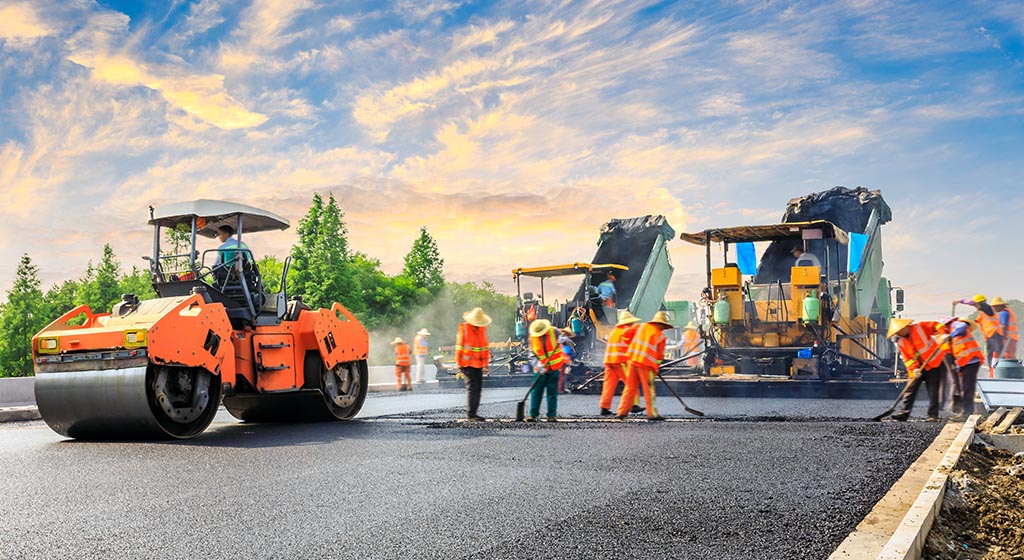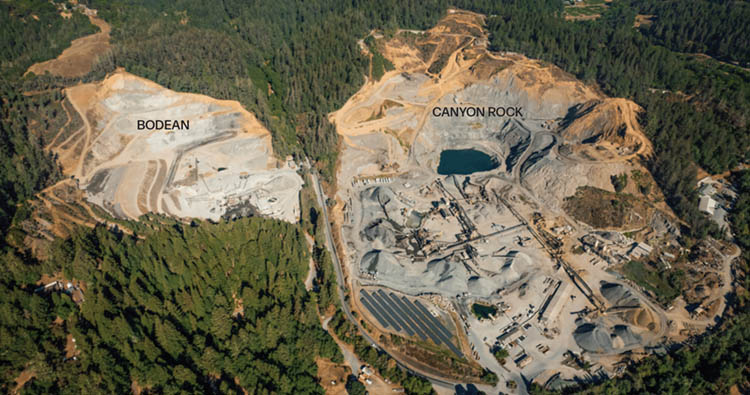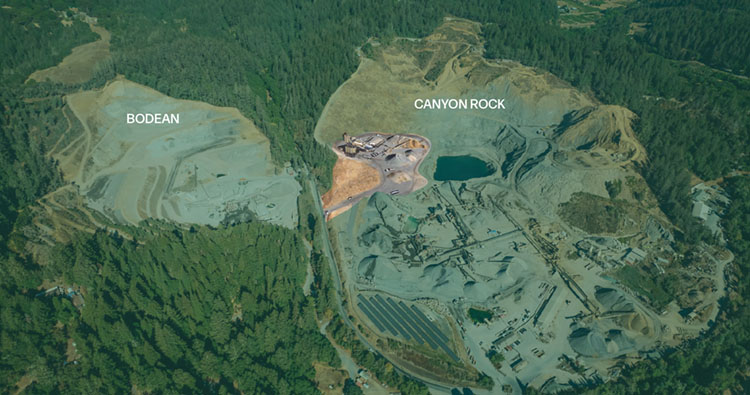
Background
- Canyon Rock's home base operation is located at 7525 Hwy 116. This is one of the county's earliest and longest operating hard rock quarries, serving Sonoma County for over eight decades
- Production of asphalt has been envisioned here since the quarry's first use permit was issued in 1957, which authorized an asphalt production facility. The current proposal provides for a more modern, environmentally-sensitive facility
- Canyon Rock has recognized the increased need for local asphalt production due to antiquated asphalt plants serving the county and the transportation effects and related environmental consequences of transporting road surfacing materials to West County, which has more miles of roadway than any other part of the county. The current proposal is a manifestation of that public need

